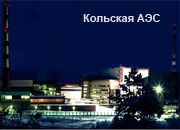The inspection was the fourth joint inspection in succession which was carried out at Russian nuclear power plants located in the vicinity of the Finnish border. The first one was at Leningrad NPP in 1992, and in 1996 a Russian-Finnish working group checked Kola NPP.
The work was supervised by Head of Rostekhnadzor Administration for nuclear power plants and research nuclear facilities safety regulation Mikhail Miroshnichenko who noted that for the last 14 years the NPP had taken measures aimed at improving safety of operation of all equipment at the enterprise. “In the course of the work at Kola NPP the commission has not revealed any deviations that can affect the safe operation of the power plants units”, M.Miroshnichenko said.
General Director of STUK JukkaLaaksonenalso emphasized that the personnel of Kola NPP had achieved progress in safe and efficient operation of the enterprise. “A large volume of equipment modernization work has been fulfilled at Kola NPP”, General Director of STUK noted, “modern computer technologies are extensively used at the NPP site”.
The foreign inspectors paid special attention to the Russian experience in the field of radioactive waste (RAW) handling, in particular, development and operation of the Liquid Radioactive Waste Processing Complex.
The Finnish experts took a favorable view of the plant employees’ professionalism and the methodical work carried out at the enterprise in order to improve the safety culture of the staff.
First Deputy General Director of Rosenergoatom Concern OJSC Vladimir Asmolov confirmed in his turn that the safety culture was a fundamental principle of work for many thousands of people employed at the Russian nuclear power plants.
In the course of inspection the working groups consisting of representatives of Finnish STUK and our Rostekhnadzor studied seven principle areas of the enterprise business: organization and management of operation; personnel training; equipment operation process; maintenance; technical assistance and nuclear fuel and RAW handling; radiation safety; emergency planning and readiness as well as fire and technical safety.
“Supervisory authorities always have comments and recommendations for the operating party”, Deputy Head of Rostekhnadzor Valery Bezzubtsev emphasized, “and now we are glad to mention that in the course of the joint inspection we saw a lot of examples that should be introduced as a good practice both at Russian and Finnish nuclear power plants”.
The regulatory authorities of the two states appreciated the operational safety of Kola NPP that was stated in the final act handed over to the Director of the nuclear power plant Vasily Omelchuk.
According to him, the security status of Kola nuclear power plant meets the requirements of supervisory authorities and the international standards. “It’s been achieved by all staff members of the plant being another confirmation of reliability and safety of the nuclear power industry in polar regions for Russian and Finnish people”, the director of the enterprise summarized.
Kola NPP is a branch of Rosenergoatom Concern OJSC. The plant is located 200 km to the south of Murmansk on the bank of Lake Imandra. Power unit No.1 of Kola NPP was commissioned in 1973. Currently, the plant operates 4 power units with VVER-type reactors. Each reactor has capacity of 440 mW. Kola NPP supplies power for Murmansk region and Karelia.
01 Января 2026 | четверг | 23:20


